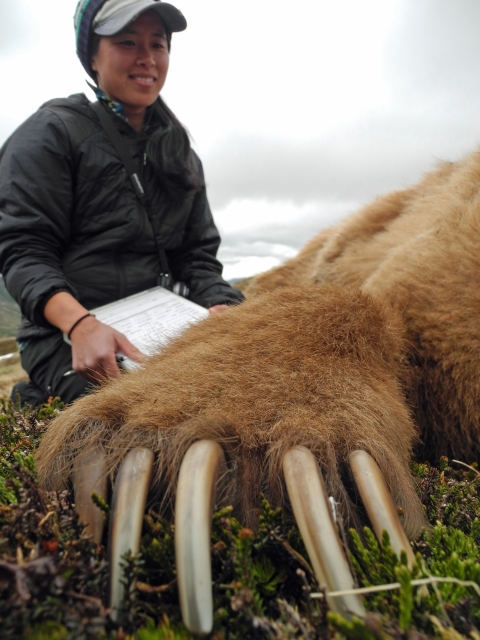Spruce forests blanket lowlands in the northeastern third of Kodiak archipelago, while to the southwest, tundra prevails. A backbone of mountains rising over 4,000 feet runs the length of Kodiak Island. Within Kodiak National Wildlife Refuge, you'll never be more than 15 miles from the Pacific Ocean. Here, Kodiak brown bears gorge on salmon and mountains rise 4,000 feet from craggy coastlines, misty fiords, and deep glacial valleys. Birds are prolific. Kodiak's climate is marine-influenced and characterized by moderately heavy precipitation, cool temperatures, and cloudy days. However, breaks in the weather are stunning.
Location and Contact Information
Our Library
Past and present projects and research conducted on Kodiak National Wildlife Refuge.
Get Involved
Kodiak welcomes and relies on volunteers, Friends, and interns to accomplish refuge goals in all aspects of conservation and education!
Common volunteer opportunities include cabin maintenance, invasive plant control, berry surveys, bird banding, and staffing the visitor center.
Volunteer opportunities on the Refuge include float plane or boat transportation to the Refuge, as well as meals and lodging, but trips to the Refuge require aviation and bear safety training to be completed in advance so be sure to plan ahead.
Projects and Research
Diverse island ecosystems, abundant fish and wildlife, and a remote wildland setting serve as an ideal outdoor laboratory. Working jointly, biologists with the Refuge, State of Alaska, and U.S. Geological Survey monitor populations of Kodiak brown bear, bald eagle, salmon and other fish and wildlife and their habitats to estimate trends in abundance, survival, and productivity. The Refuge also sponsors and conducts basic and applied research projects, develops monitoring methods, and evaluates management strategies.
By designing and implementing appropriate research and monitoring studies, the Refuge will better understand, conserve, and protect its natural and cultural resources for the continuing benefit of the public.









